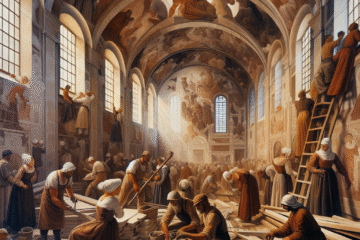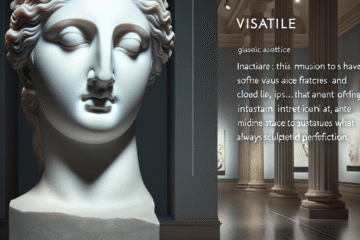Introduction: A Square That Shook the World
When Kazimir Malevich unveiled his painting Black Square in 1915, the art world gasped—some in admiration, others in outrage, and many in disbelief. A black square on a white background, unadorned by detail or figure, the painting was unlike anything the public had seen. Yet in its stark minimalism, it represented something monumental. Was it a declaration of artistic death or the genesis of a new visual language? This deceptively simple work opened a Pandora’s box of philosophical, political, and artistic dialogue that still echoes more than a century later. To understand its power, we must explore the evolution of visual art through the eras leading up to—and beyond—Malevich’s silent black square.
I. From Representation to Abstraction: The Seeds of Revolution
For centuries, Western art was dominated by the pursuit of realism, from the sacred icons of the Byzantine era to the perspectival innovations of the Renaissance. Art was a mirror to nature, a stage for human drama. But with the invention of the camera in the 19th century, artists were freed (or perhaps forced) to explore new purposes for their work. As photography took over the role of representation, painting began its introspective journey. Movements like Impressionism and Post-Impressionism disrupted the visual order, favoring emotion and perception over accuracy. Monet’s shifting light, Van Gogh’s swirling skies, and Cézanne’s deconstructed forms pointed to a new realm—one less concerned with mimicking the external world, and more devoted to expressing inner truths.
II. The Dawn of the Avant-Garde: Cubism and Futurism
In the early 20th century, Cubism and Futurism shattered the picture plane altogether. With artists like Picasso and Braque fragmenting reality into geometric forms, and Italian Futurists glorifying speed, technology, and dynamism, traditional art was being systematically dismantled. These movements laid the groundwork for abstraction by stripping away subject and structure. Geometry became symbolic, a new lingua franca for spiritual and intellectual ideas. This artistic current flowed across Europe, and in the charged atmosphere of pre-revolutionary Russia, Kazimir Malevich stood poised to deliver the radical next step.
III. The Suprematist Revolution: Malevich’s Vision
In 1915, amidst the turbulence of World War I and the upheavals of Russian society, Malevich introduced Suprematism—a new mode of abstraction dedicated to “the supremacy of pure feeling in creative art.” Black Square was its keystone and manifesto. More than a painting, it was an icon, an assertion that painting no longer needed to depict anything but itself. Displayed like a religious icon high in the corner of a room at the 0.10 exhibition in Petrograd, Black Square usurped sacred space and declared art autonomous. Malevich described it as the “face of the new art,” an emblem of aesthetic zero—a place where all figurative tradition had collapsed, ready to be rebuilt afresh.
IV. Philosophical Ground Zero: Mysticism and Materialism
Black Square did not appear in a vacuum. It was informed by mystical and philosophical currents that were coursing through Russian intellectual culture. Theosophy and Eastern metaphysics intermingled with radical politics and modernist theory. Malevich’s square resonated with the nihilism of the age but also with a utopian desire to glimpse the infinite. In painting nothing, he gestured toward everything—silence as a new kind of visual eloquence. Some read it as a statement of pure nihilism, others as the birth of a spiritual art form stripped of material illusions. In technological terms, it was likewise forward-looking, akin to a visual reboot, a blank screen waiting to be programmed anew.
V. Legacy and Aftershocks: Echoes Across the Century
Black Square reverberated through 20th-century art. The post-war Minimalists in America such as Ad Reinhardt and Frank Stella echoed Malevich’s purity of form. Abstract Expressionists like Rothko and Barnett Newman turned color into a spiritual experience. Conceptual artists took the dematerialization of art to new extremes, often pointing back to Malevich as a progenitor. Meanwhile, postmodern discourse debated whether Black Square was the end or the beginning of painting. Its image—one black void—became paradoxically filled with meanings, used by critics and creators to symbolize silence, rebellion, transcendence, or even futility. Each interpretation glimpses a fragment of Malevich’s elusive vision: presence through absence.
Conclusion: A Portal, Not a Wall
To call Black Square a mere painting is to misunderstand it. It is an event, a rupture, and a proposition. It invites us to question what art is, what it can express, and what role it plays in society. It is deeply philosophical, situated at the crossroads of technology, culture, and mysticism. Whether you experience it as a loss or a leap, a void or a vessel, Malevich’s square continues to challenge our perceptions. In its seeming simplicity lies infinite complexity. It may look like nothing—but perhaps it contains everything.


